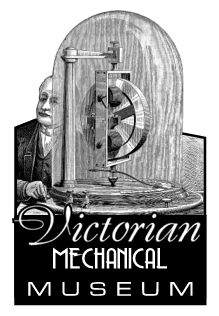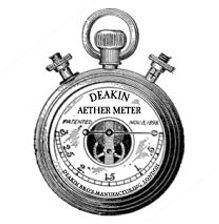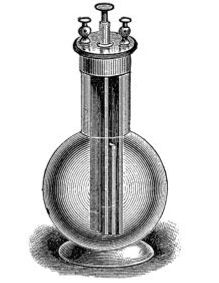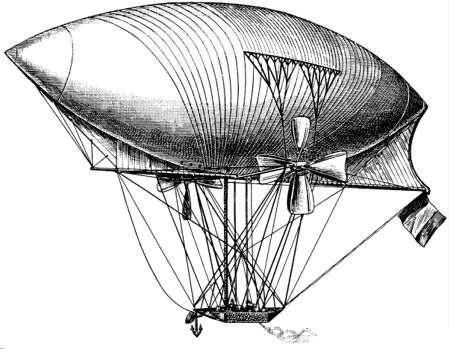The contents are:
- a cabinet card photograph of Adler Fanshaw, dated 1893. (Item 111A)
- a newspaper clipping of an obituary for Fanshaw, annotated with a date of August 15, 1953. (Item 111B)
- a copy of Startling Stories magazine from July 1949. (Item 111C)
- an incomplete transcript of an apparent interrogation of Fanshaw, date-stamped October 5, 1953. (Item 111D)
The Fanshaw document is quite a discovery, albeit a very enigmatic one. It is incomplete; page one is missing and it is unknown how many pages followed page five. It is an original typed document, not a carbon copy. It is likely that it was transcribed from another copy at the time of the OCT 5 1953 date stamp, and that occurred some seven weeks after Fanshaw's death on August 15. The four pages appear to then have been removed or stolen at some point from their place of storage.
Who was interrogating Adler Fanshaw? Archer Bowens notes, "The recipient of the pages made an intriguing notation--connecting the initials "CS" with the name Starkweather. This proved to be a fortuitous clue as it directed us to the person of Cameron Starkweather, information about whom existed in our own archives here at the Victorian Mechanical Museum."
According to internal records, Victorian Mechanical Museum Curator Robert Fitzhugh was visited on December 2, 1947 by a gentleman who identified himself as Jonathan Rogers, an American private investigator working at the behest of a lawyer settling estate issues relating to a member of the Hawkins family. He was searching for any documents and personal effects that may have belonged to Geoffrey Hawkins, who had disappeared in 1911. Suspicious of the man's story and motives, Fitzhugh dismissed him politely but firmly. Fitzhugh, a retired British intelligence officer, immediately began an investigation of the man.
After making a number of discreet inquiries to former associates in the intelligence community, Fitzhugh discovered that Jonathan Rogers was in fact Colonel Cameron Starkweather, an American military intelligence officer. It was determined that Starkweather was at that time assigned to Project Nick, a top secret operation located at Patterson Air Force Base in Dayton, Ohio. Project Nick was created to determine the feasibility of particle beam weapons, applying theories developed by the late Nikola Tesla. It immediately became apparent why Starkweather was pursuing information and materials relating to Geoffrey Hawkins; the members of the Society of the Mechanical Sun had invented particle beam weapons using ætherdynamic science some six decades earlier.
Project Nick was supposedly disbanded a few years after its inception, so it is not clear why Starkweather was so aggressively pursuing the matter with Fanshaw in 1953. A similar initiative was undertaken in 1958 by ARPA (Advanced Research Projects Agency; later DARPA) and given the codename Project Seesaw. It is unknown whether Starkweather had any involvement with that operation.
Apparently, a frustrated Starkweather learned very little from any of his investigations. The recipient of the four-page transcript even made a point of underscoring one particular statement made by Starkweather: " . . .we have to date been unable to collect any substantial information or resources concerning Mr. Hawkins and his associates."
It is not known exactly when Starkweather conducted the interview with Fanshaw, but it would have occurred sometime between October 10, 1952 and Fanshaw's death on August 15, 1953, based on Fanshaw's stated age.
Presented next is the newspaper clipping of Fanshaw's obituary:
The annotated date of August 15, 1953 refers to the day of Fanshaw's death; that is confirmed by the Saturday reference in the obituary. The date of publication was either August 16 or 17; Fanshaw's funeral was held on August 18, 1953. Though unidentified, the newspaper was likely the Homestead Daily Messenger. Fanshaw's home in Munhall, Pennsylvania was quite close to the Duquense location where the Hawkins Strongbox was discovered in 2003.
Also included in the envelope was a copy of the magazine Startling Stories that was referenced in the interrogation transcript.
The short story, The Battle Below, is listed on the contents page with the tag line, "Deep below the streets of London, secrets await discovery." Archer Bowens recalls, "The Musuem's last contact with Adler Fanshaw was in the early 1940s. He had donated a number of notes and records relating to his tenure at the London Evening Gazette during the 1880s. He had published a few obscure mystery novels in the '30s and a smattering of magazine stories during the war. The Battle Below was an unusual departure for him, coming so late in his life and referencing long kept Society secrets. One can not help but question his motivations for writing and publishing it."
The remaining item found within the Fanshaw Envelope is somewhat of an anomaly, but significant nonetheless. This cabinet card portrait of Fanshaw is dated 1893, predating the other items by sixty years.
In the portrait, Fanshaw wears a Mechanical Sun brooch on his lapel. His membership in the Society of the Mechanical Sun had been long suspected but never confirmed. It would appear that question has now been resolved.


























0 Observations:
Post a Comment